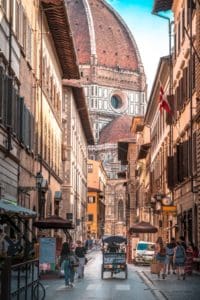The Tradition of Icon Painting in Eastern Orthodoxy: Sacred Artistry Explained
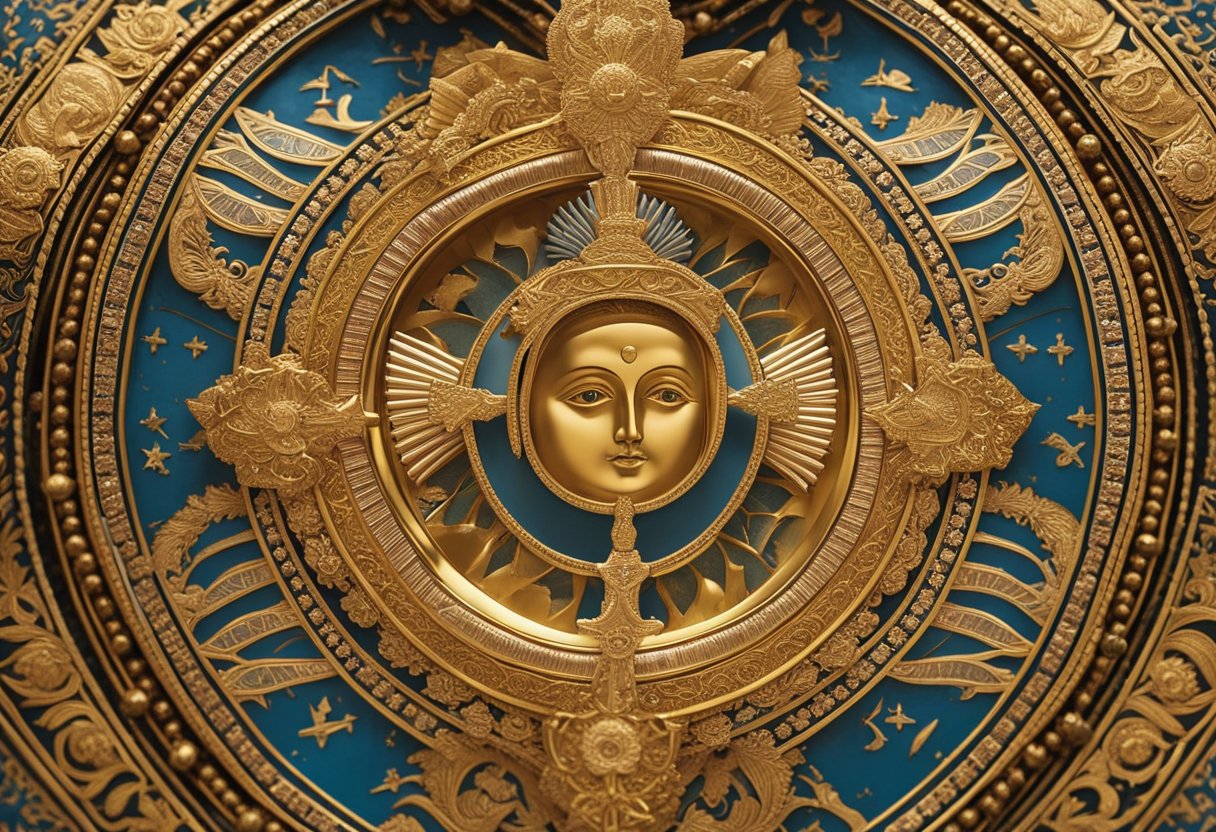
Updated On: April 07, 2024 by Asmaa Alhashimy
Icon painting is a venerable and intricate part of the Eastern Orthodox tradition, holding a place of great spiritual significance since its inception in the early days of the Church. These sacred images, known as icons, serve not only as religious art but as theological texts in colour and form. They depict Christ, the Virgin Mary, saints, and angels and are deeply embedded in the liturgical and devotional life of the Orthodox faithful. Each icon is crafted with purpose, following a set of traditional techniques and styles handed down through generations, affirming the continuity and richness of Orthodox spirituality.
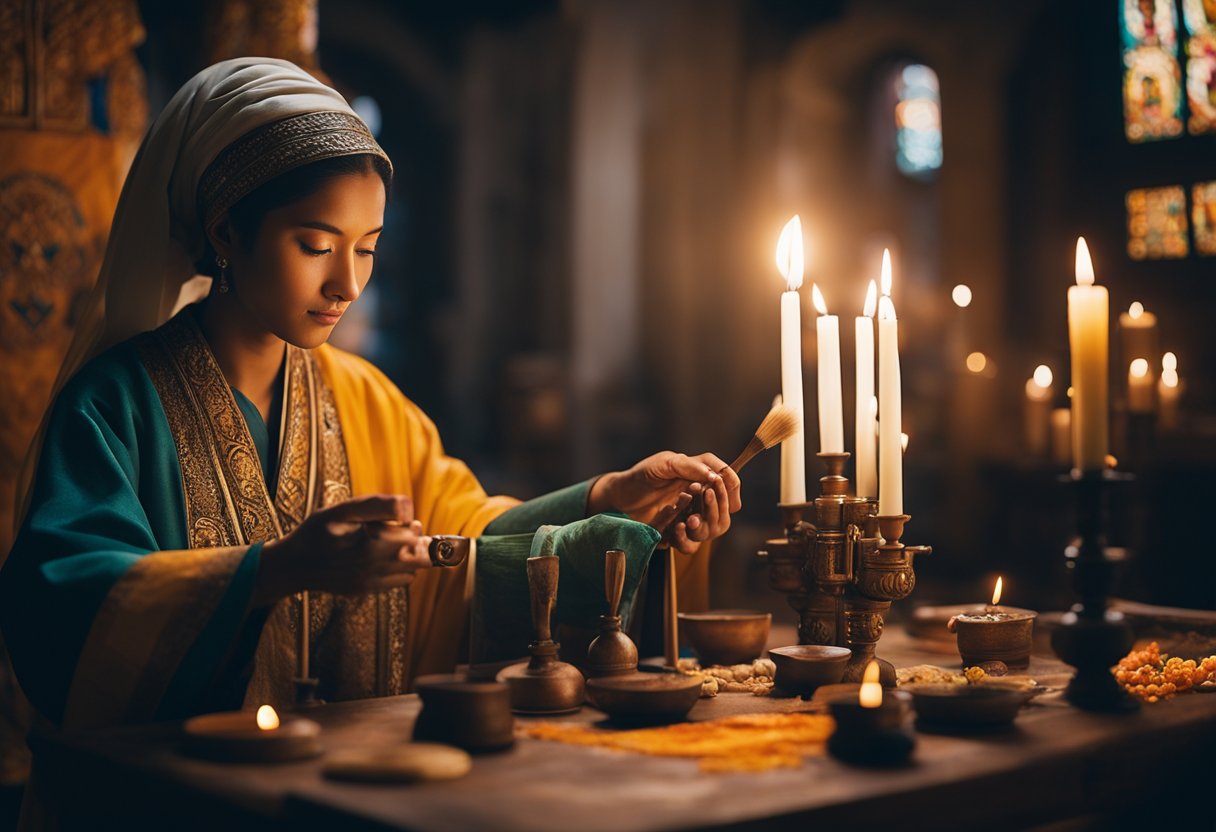
The tradition of iconography is steeped in history and theology, representing the visible reality of the invisible spiritual world. Icons convey profound religious truths, especially the incarnation of Christ, which affirms that the divine took on human form and can thus be depicted visually. This understanding was solidified amidst the tumult of Iconoclasm, when the use of religious images was hotly contested, leading the Seventh Ecumenical Council to affirm their veneration. Icon painters, or iconographers, are regarded not merely as artists but as theologians and spiritual practitioners, whose work enables the faithful to perceive the heavenly realm.
Table of Contents
Historical Context and Origins
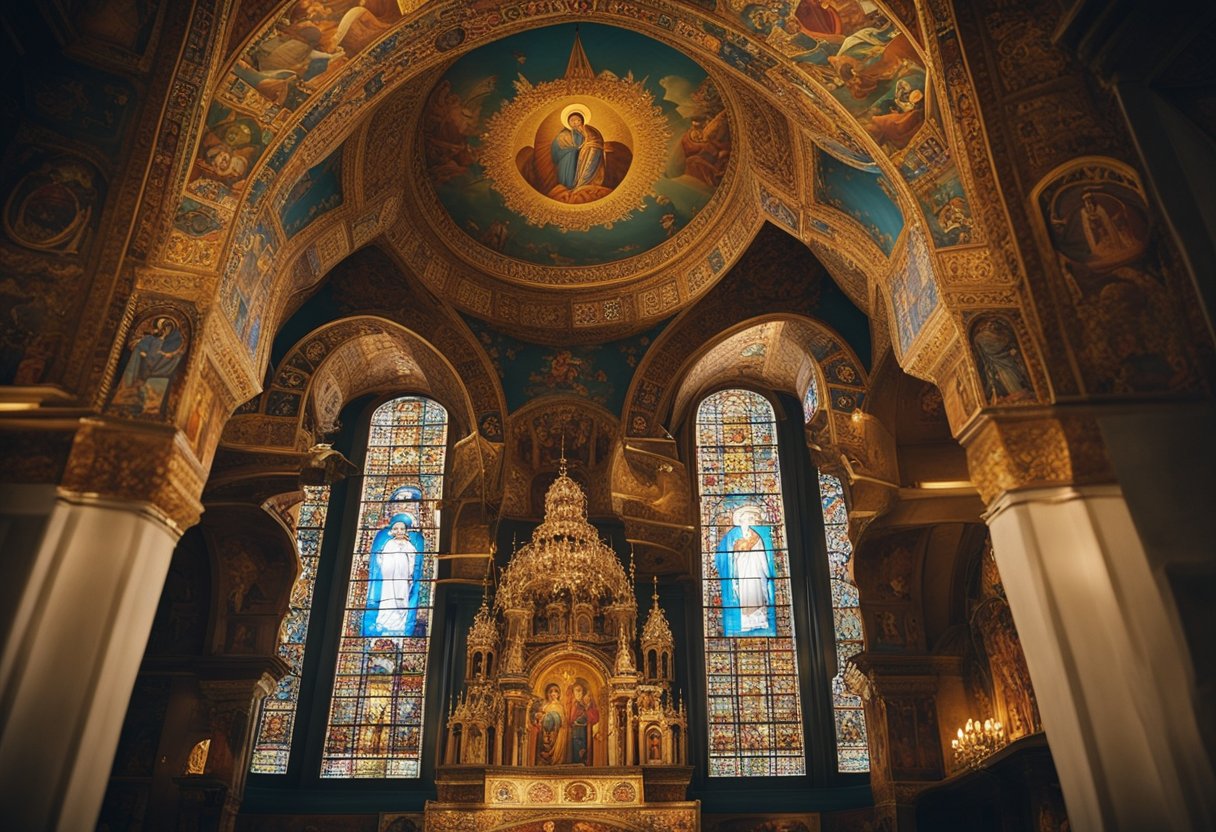
Iconography holds a fundamental place in the spiritual and artistic domains of Eastern Orthodoxy, with deep roots in the Byzantine Empire and infused with influences from Classical Antiquity.
The Birth of Iconography in the Byzantine Empire
The tradition of icon painting, a distinctive feature of the Byzantine style, began to flourish following the establishment of Christianity as the state religion of the Roman Empire. After the formal split of the empire, Constantinople emerged as the heart of the Byzantine Empire, becoming a potent centre for religious art. It was from this vibrant capital that iconography spread, with icons serving not only as devotional items but also as embodiments of doctrinal teachings.
Influence of Classical Antiquity on Religious Art
Byzantine iconography was not created in isolation but was profoundly influenced by the artistic language of Classical Antiquity. The harmonious and idealised forms of ancient Greece and Rome were integrated with Christian themes, lending the icons a sense of transcendental beauty and solemnity. This synthesis enriched the religious art emanating from the Byzantine Empire, leaving a legacy characterised by both reverence and aesthetic sophistication.
Theology and Symbolism

In the Eastern Orthodox tradition, icons are not merely art, but they are profound theological expressions and spiritual tools. They embody the beliefs and values held by Orthodox Christians, conveying deep symbolic meaning.
Icons as a Window to the Divine
Icons serve as both a reflection and presence of the divine, acting as a window through which we may view the heavenly realm. Depictions of Christ, the Mother of God, and saints are not just visual representations; they are believed to be filled with the spirit of the person they illustrate. For example, through the veneration of an icon of Christ, one is venerating Christ Himself, and similarly, an icon of the Mother of God draws us closer to Mary and her role in the divine narrative.
Iconic Representation of Theological Concepts
Through their symbolic language, icons convey theological concepts such as the mystery of the Incarnation and the nature of the Holy Trinity. This is evident in the careful and intentional portrayal of figures and scenes, adhering to traditional styles that emphasise spiritual rather than physical reality. For instance, icons often feature halos to signify holiness, and the arrangement of figures might represent theological hierarchies or relationships—the Holy Trinity, for instance, uniquely symbolised by three angels visiting Abraham in the icon of the Hospitality of Abraham.
Materials and Techniques
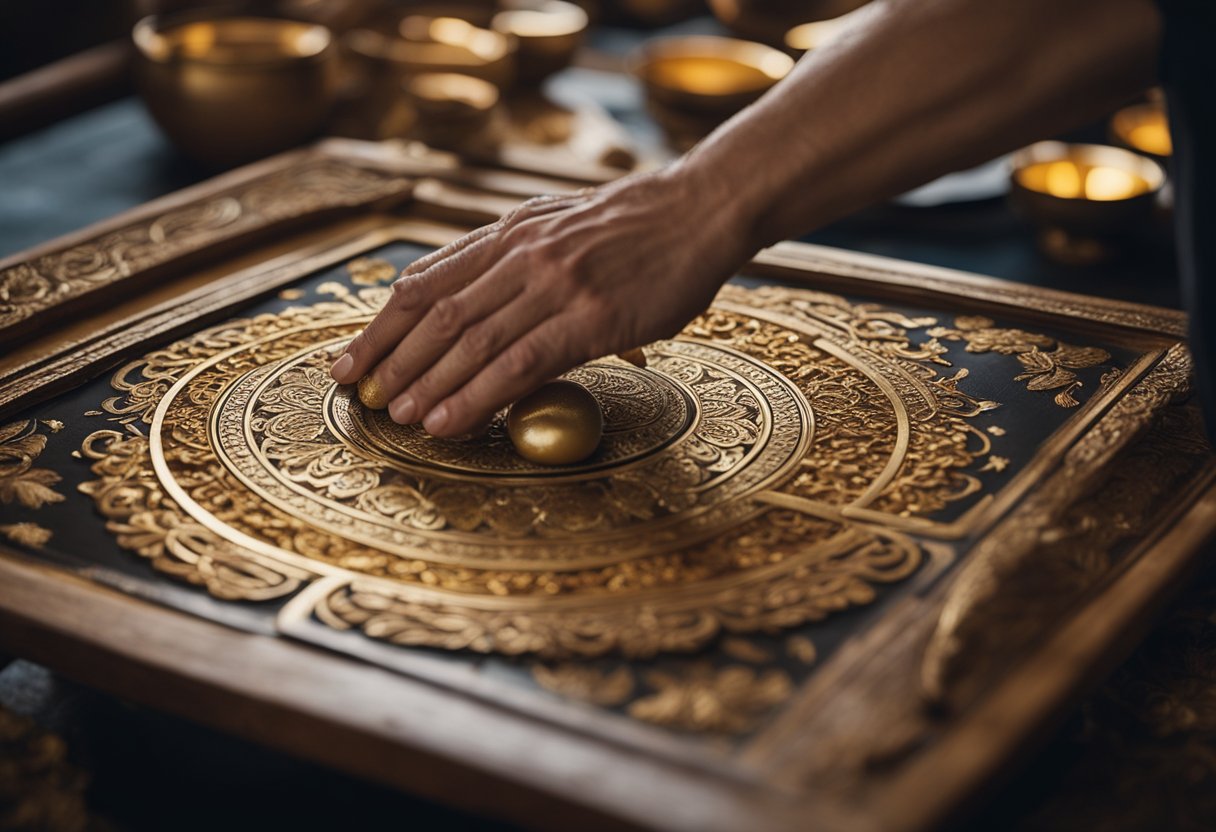
In icon painting, the meticulous selection of materials and mastery of techniques are essential to the creation process. These elements have been foundational in the evolution of this sacred art form.
Traditional Materials in Icon Creation
We begin with traditional materials. Egg tempera is a quintessential medium used in icon painting, prized for its longevity. Artists combine pigments with an emulsion made from egg yolks, yielding a fast-drying and durable paint. Icons are typically painted on wood panels, prepared with a layer of gesso—a white, chalky substance—to create a smooth surface. These panels serve as the canvas for the spiritual imagery depicted in the icons.
Craftsmen also incorporate frescoes and mosaic techniques into the creation of larger, wall-mounted icons and murals. For frescoes, the application of pigments occurs on wet plaster, setting as the plaster dries. Mosaics consist of small, coloured pieces of glass or stone, assembled to form sacred images.
Evolution of Iconography Techniques
The evolution of iconography techniques delves into the transition from strictly employing traditional methods to integrating contemporary practices. While egg tempera remains widely used, some modern iconographers experiment with new approaches to pigment mixing and application. Yet, they ensure these innovations align with the spiritual integrity of iconography.
Technological advancements, particularly precision tools, have refined the wood panel preparation, making it more uniform and accessible. Meanwhile, in mosaic creation, new adhesive materials and methods offer increased versatility and durability, enabling the preservation of this age-old artistry in contemporary settings.
Our dedication to this sacred practice respects its history while embracing appropriate innovations that maintain the essence and purpose of the icons.
Icon Veneration and Use in Worship
In the spiritual life of the Orthodox Church, icon veneration is deeply intertwined with worship and personal prayer, reflecting a tangible expression of faith and spirituality.
Icons in Liturgical Celebrations
We find that icons hold a prominent place in Orthodox liturgies, with their presence and veneration being integral to communal worship. During liturgical celebrations, especially on feast days, icons of the saint or holy event being commemorated are often processed within the church and kissed by the faithful. This act signifies respect and honour towards the figures depicted. Icons serve not only as decorations but as spiritual tools that guide our prayer and fasting, helping us connect with the divine.
Private Prayer and Icons
For personal spirituality, icons are a focal point for prayer at home. It’s common for Orthodox Christians to maintain an icon corner in which they stand before these sacred images to pray. Our personal encounters with icons can vary; some might recite a prayer specific to the saint or feast depicted, while others might simply stand in silent veneration or contemplation. The veneration of icons in private prayer underscores their role as a window to the divine, enabling an intimate connection to the church’s teachings outside of the physical church environment.
Canonical Rules and Styles
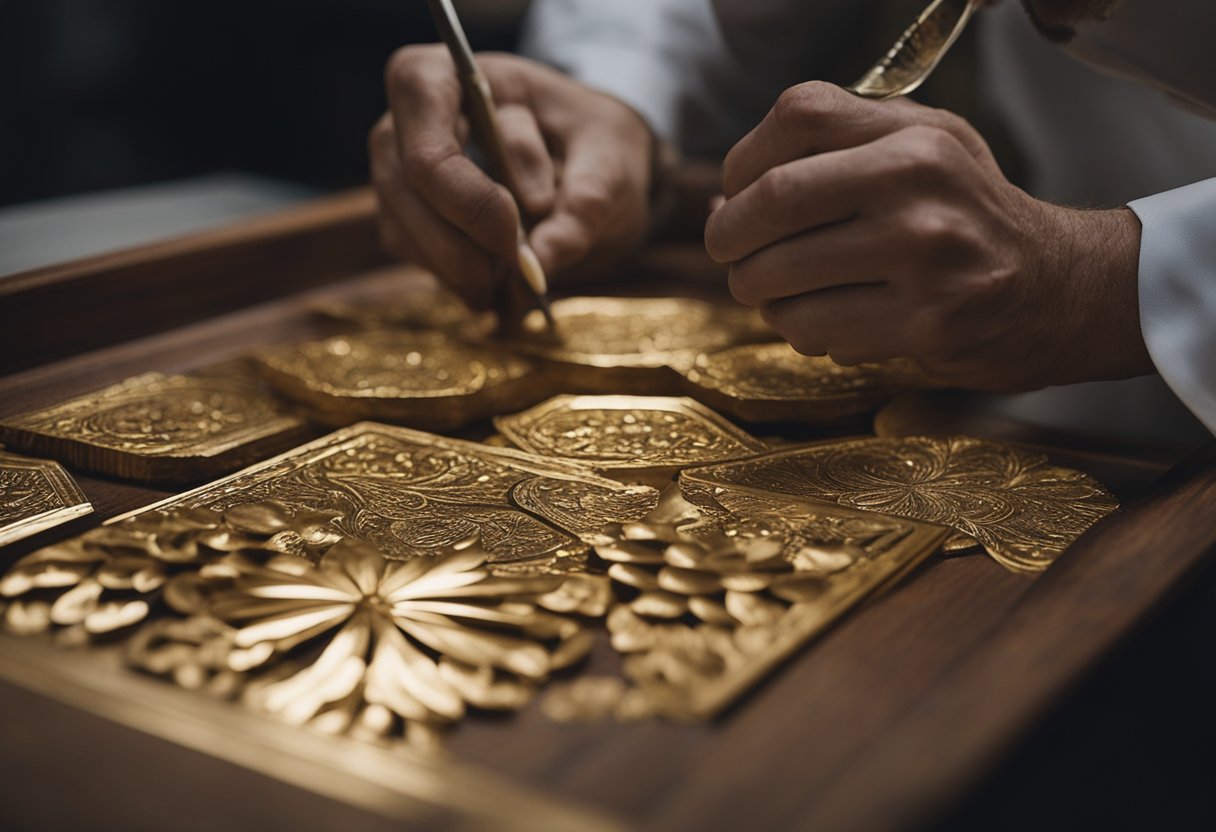
In the realm of Eastern Orthodox iconography, adherence to canonical rules is regarded with utmost importance, ensuring that the sacred art serves its intended liturgical and instructive purposes.
The Canon of Eastern Orthodox Iconography
The canon of Eastern Orthodox iconography is a set of guidelines that ensures uniformity and theological accuracy in icons. This canonical framework encompasses the representation of holy figures, imparting theological truths through symbolic means. Icons are more than mere religious paintings; they are a visual Gospel, teaching the faithful and offering a window into the divine. For example, in Byzantine iconography, the use of gold symbolises the heavenly realm, and the absence of perspective intends to invite the viewer into a transcendent reality beyond the physical world.
Stylistic Schools within Eastern Orthodoxy
Different stylistic schools have emerged within Eastern Orthodoxy, each with unique techniques and aesthetics, yet all within the bounds of the iconic canon. Notable among these are the Cretan school, which is known for blending both Byzantine and Renaissance characteristics, and the Novgorod school, renowned for its simple and expressive figures. These stylistic variations offer a rich diversity within the sacred tradition, reflecting a regional character while maintaining the integrity of holy depictions as prescribed by the canon.
Iconographic Themes and Subjects
Within the rich tradition of Eastern Orthodoxy, iconography embodies spiritual narration and veneration through its distinct themes and subjects. This powerful visual language communicates profound theological concepts, often centred around the depiction of Narrative Scenes from the Bible and the Portrayal of Saints and Holy Figures, facilitating deeper contemplation and worship.
Narrative Scenes from the Bible
The biblical narrative is brought to life through icons, which often depict key events with deep theological significance. From the creation of the world to the lives of prophets and patriarchs, Old Testament stories are presented with symbolic elements, evoking reflection and insight. A focal point of this representation is the Nativity of Christ, illustrating the incarnation of Jesus Christ and providing a visual exegesis of salvation history according to Orthodox belief.
Portrayal of Saints and Holy Figures
Icons serve as venerated images of saints and holy figures, acting as a bridge between the earthly and the divine. Central to this practice are icons of the Theotokos, the Mother of God, whose images are revered for her role in the mystery of the Incarnation. Saints, revered for their holy lives, are also commonly depicted, with their images serving to inspire the faithful to live virtuously in accordance with their examples.
The Role of the Iconographer
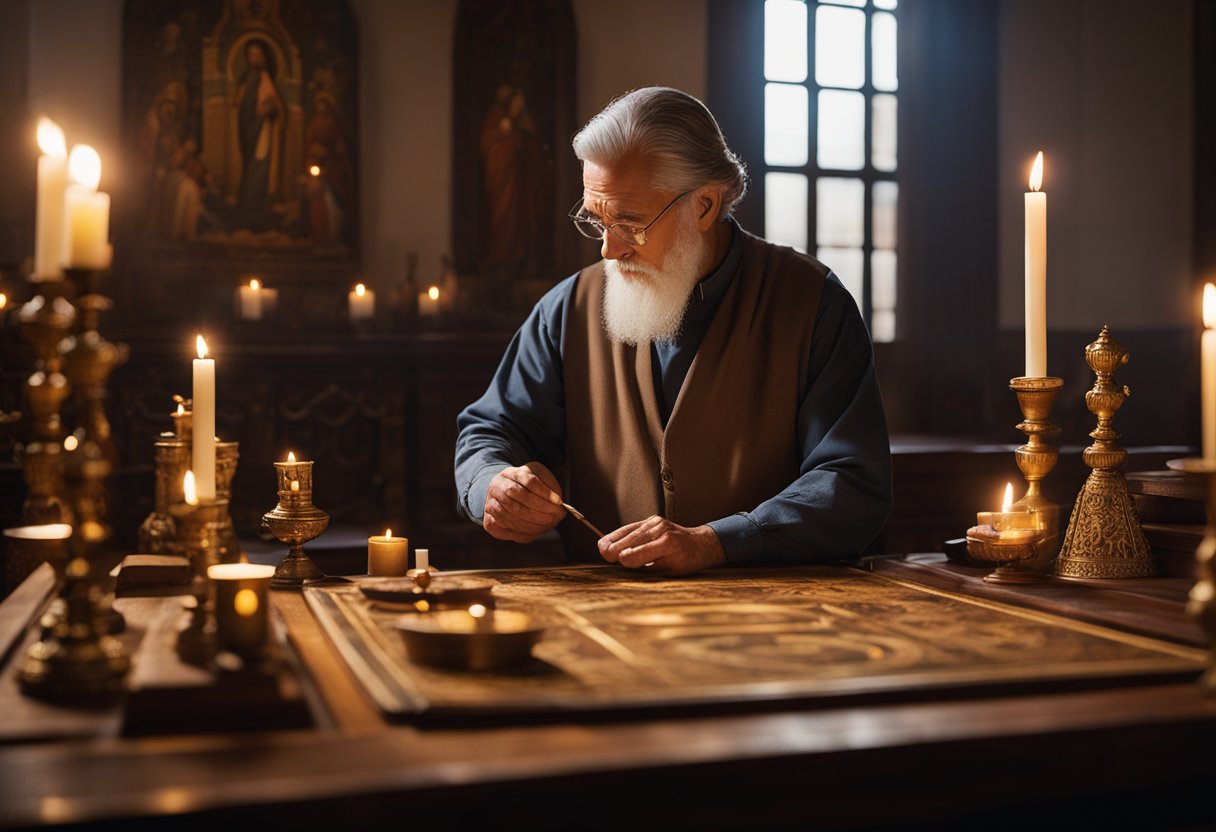
The iconographer is a vessel through whom the sacred nature of icons is brought into visual form, requiring both artistic skill and deep spirituality. This role necessitates a balance of discipline and creativity to produce icons that are more than art; they are a holy reflection of Orthodox beliefs.
Spiritual Life and Discipline of Iconographers
The spiritual life of an iconographer is paramount; it is said that the practice of creating an icon is a form of prayer and fasting. Iconographers often follow a strict spiritual regimen, immersing themselves in the Philokalia and other ecclesiastical texts to maintain the sanctity of their craft. Their work is a reflection of their inner holiness, with each brushstroke intended as an act of worship and a testament to their faith. The discipline required to become a skilled iconographer is intense and is often said to mirror the spiritual discipline required in one’s personal life to attain a state of holiness and connection with the divine.
Notable Iconographers in History
Throughout history, significant iconographers have been credited with shaping the tradition. St. Luke is often honoured as the first iconographer, having created the earliest depictions of the Virgin Mary and Christ. His icons set a precedent for the style and spirit of subsequent works. Iconographers aim to emulate his spiritual connection with their subjects. Centuries of iconographers have strived to uphold the profound religious significance encapsulated by those early creations, treating their role not merely as artists but as custodians of a divine narrative.
The role of an iconographer is thus one of immense spiritual responsibility. They are tasked with creating more than just images; their work serves as a window to the sacred, a tool for veneration, and a silent yet profound narrative of the Orthodox faith.
Iconostasis and Church Architecture
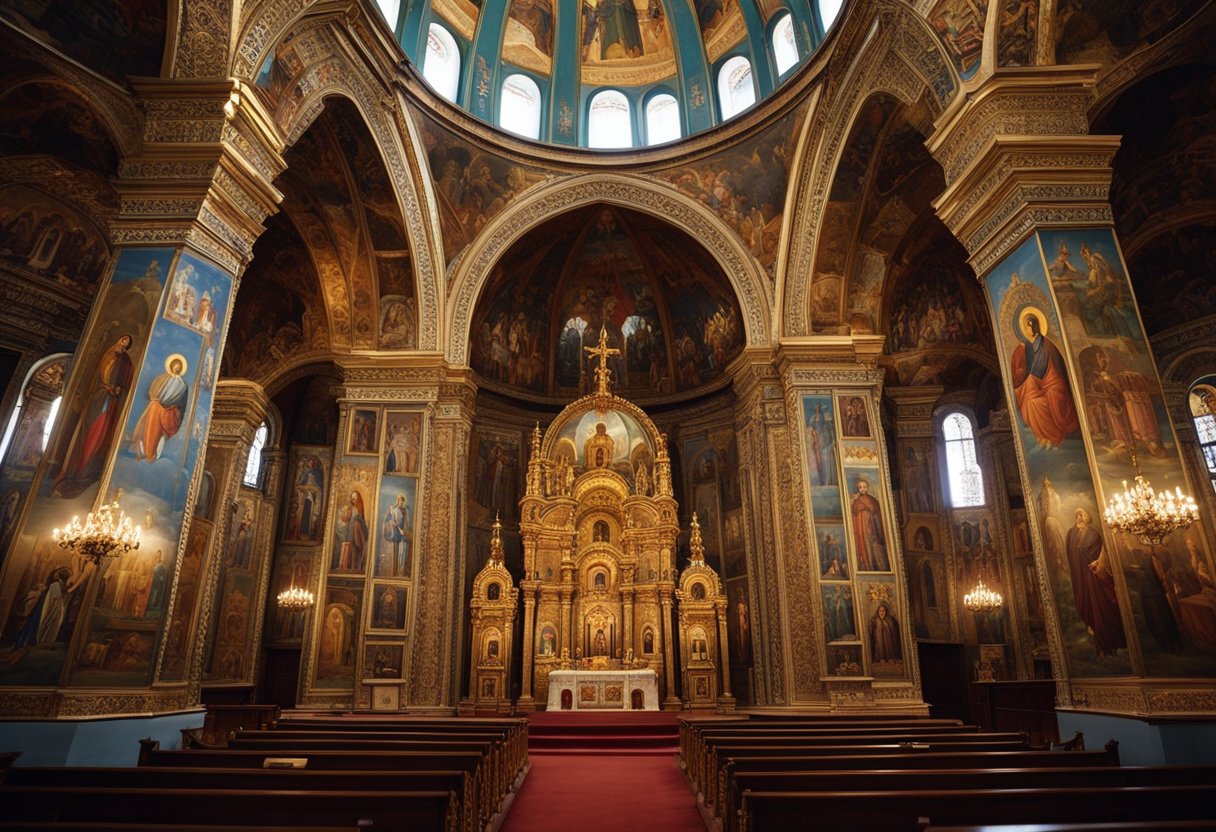
The iconic partition known as the iconostasis holds profound significance in Eastern Orthodox church architecture, marking the sacred division between the nave and the altar. It has evolved to reflect theological concepts and societal changes.
Function and Evolution of Iconostasis
The iconostasis is a central feature in the architectural design of an Eastern Orthodox church, serving both liturgical and didactic purposes. Initially, it was a simple barrier, but over time, it has transformed into an elaborate structure adorned with icons. In many churches, the iconostasis developed from a single row of icons on the templon into a multi-tiered wall that fully separates the altar from the nave. The iconostasis mirrors societal changes and artistic trends throughout history, reflecting the church’s role in society.
Incorporation of Icons in Sacred Spaces
The placement of icons within the iconostasis is deeply meaningful, following a traditional hierarchy and theme. At the centre is the Royal Door, flanked by icons of Jesus Christ and the Theotokos to signify their central role in the faith. Typically, the icon of Christ is positioned to the right of the Royal Door, while the Theotokos is to the left. Above the doors may be a row of icons depicting the Last Supper or the Twelve Great Feasts. Extending upwards, the iconostasis may include additional rows with representations of the Apostles or Old Testament figures. The incorporation of icons in sacred spaces adheres to a canonical order that resonates with the faithful, connecting them to the divine.
Within the broader architectural context, the iconostasis complements the structural elements of the church, such as the dome, which typically features a depiction of Christ Pantocrator, and the nave, where the congregation gathers. The throne and other liturgical furnishings accentuate the sacredness of the space, all cohesively linked through the visual theology expressed in the icons.
Controversies and Ecumenical Councils
In our discussion, we focus on the pivotal events within Eastern Orthodoxy that shaped the tradition of icon painting, namely the Iconoclast Controversy and the definitive rulings of the Seventh Ecumenical Council.
Iconoclast Controversy and Its Impact
The Iconoclast Controversy arose in the 8th century when the use of religious images became a contentious issue within the Byzantine Empire. Proponents of iconoclasm, known as Iconoclasts, condemned the use of religious icons, citing the Old Testament’s prohibition of graven images and the potential for idolatry. The movement gained imperial support, notably from Emperor Leo III, sparking a profound period of turmoil for the veneration of icons. It was during this time that figures such as St. Theodore the Studite were vocal in their defence of icons, emphasising their role in Christian practice and worship.
Resolution Through the Seventh Ecumenical Council
Our understanding deepens with the proceedings of the Seventh Ecumenical Council (Second Council of Nicaea) in 787, which upheld the veneration of icons as an orthodox Christian practice. This resolution was paramount to restoring and legitimising the use of religious images. Over time, theological support from scholars such as St. Gregory Palamas further reinforced the theological foundation for the veneration of icons, linking them with the spiritual experience and the divine.
Both the Iconoclast Controversy and the Seventh Ecumenical Council left indelible marks on Eastern Orthodoxy, shaping its doctrines and practices around religious imagery. The legacy of these theological debates is evident in the continued tradition of icon painting within the Orthodox Church.
Modern Developments and Global Reach
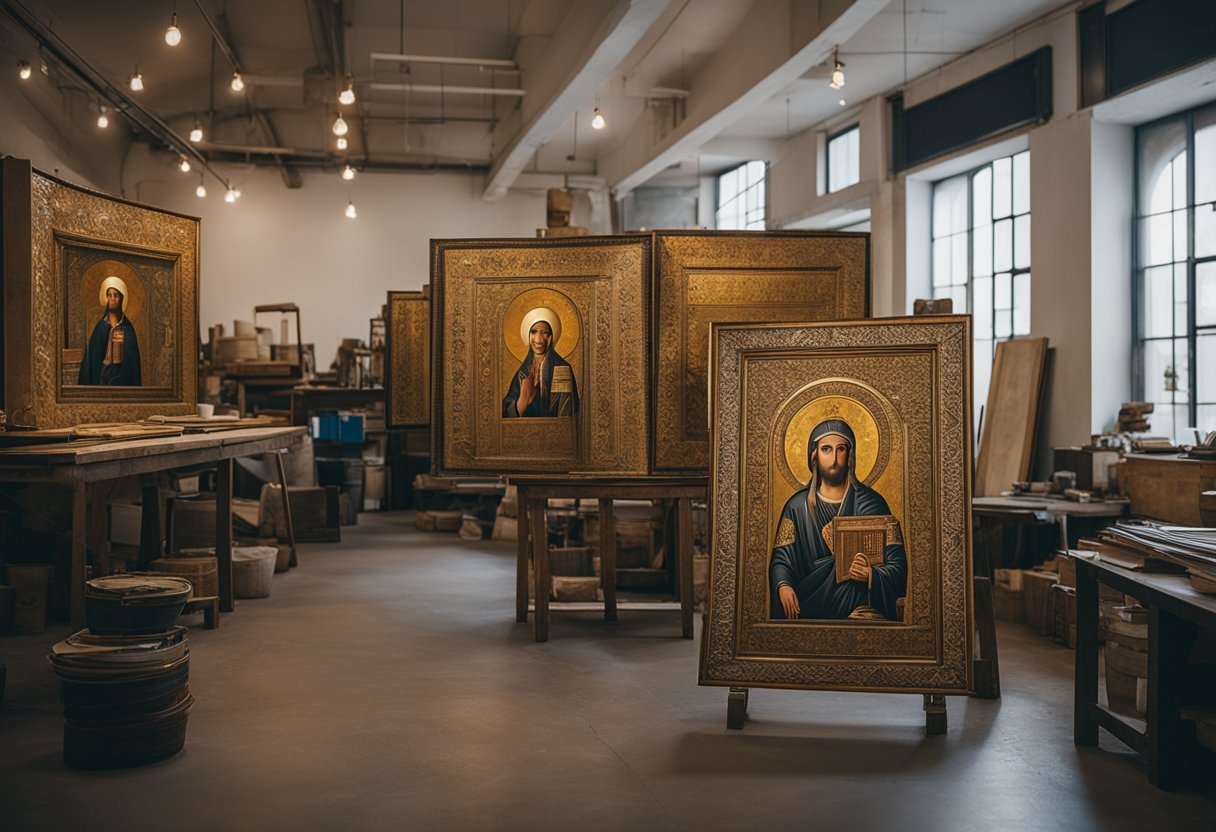
In this section, we explore the influence of contemporary iconography on world culture and how Eastern Orthodox icons have adapted in the digital age.
Contemporary Iconography Across Cultures
Today’s iconographers often integrate the traditional techniques honed over centuries with global cultural influences. Through these contemporary expressions, religious icons remain vital to Orthodoxy, while fostering a dialogue between the traditional and the modern across cultures. This exchange has led to a rich variety of icons that still retain the sacredness central to Orthodox tradition but often reflect a diversity influenced by various cultural backgrounds. The Art of Icon Painting in a Postmodern World discusses these intercultural exchanges and their profound impact on iconography.
Eastern Orthodox Icons in the Digital Age
The advent of the digital era has drastically expanded the global reach of Eastern Orthodox icons. Digital platforms now offer a myriad of resources, from detailed photographs of historical icons to contemporary digital creations for download. The virtual space transcends physical boundaries, enabling icons to be venerated from any location, thus influencing religious practice globally. Furthermore, instructional materials on iconography are now accessible online, fostering the growth of this sacred art form around the world. Insights into these developments can be found within sources like the discussion of Icon Painting Tradition and Modern Art.
Frequently Asked Questions
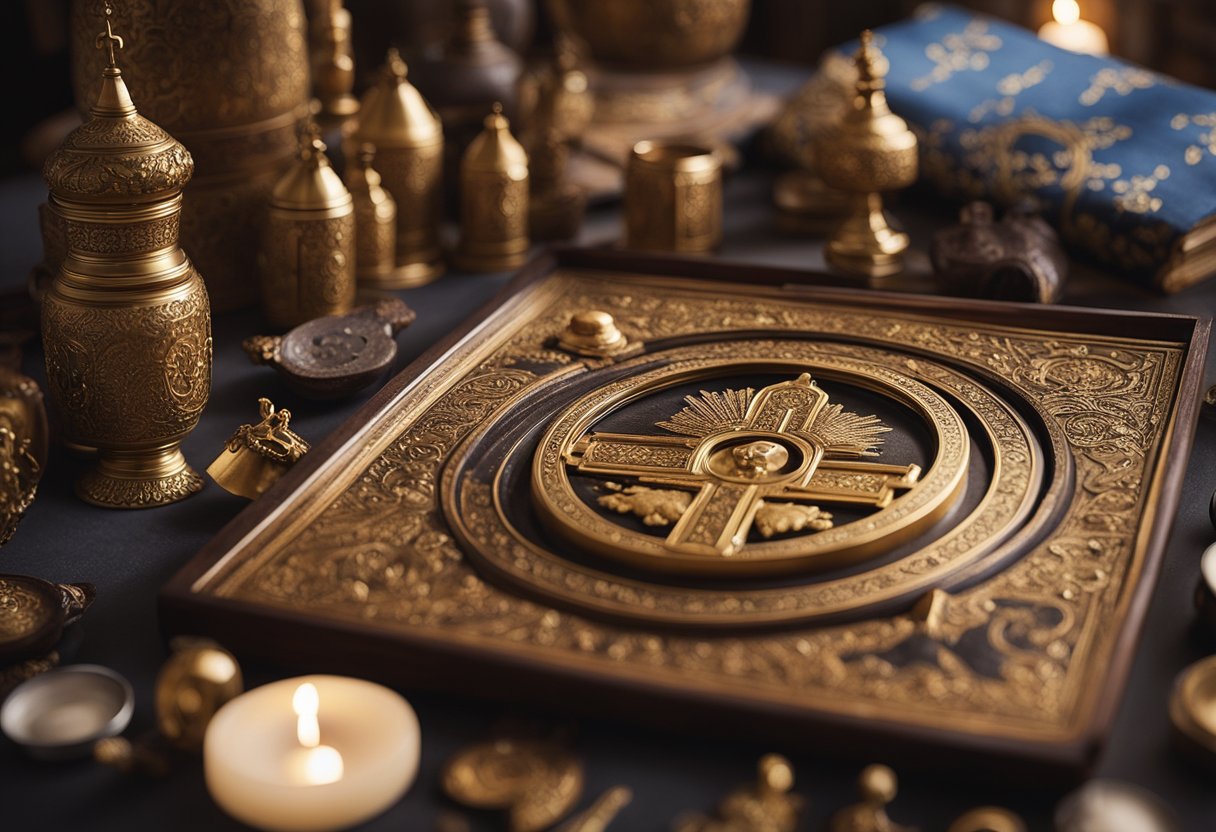
In this section, we uncover the essential elements of icon painting within Eastern Orthodoxy, addressing common inquiries to enhance understanding of its significance and practice.
What significance do icons hold within the practice of Eastern Orthodoxy?
Icons serve as more than art within Eastern Orthodoxy; they are venerated as sacred tools that bridge the spiritual and the physical worlds. They are esteemed for their role in personal devotion and liturgical life, often being described as windows into heaven.
How do the styles and techniques in Orthodox iconography differ from other religious art forms?
Orthodox iconography employs specific styles and techniques that are distinguishable from Western art forms. The Icon FAQ notes that icons are two-dimensional and avoid naturalism, focusing on conveying spiritual truth rather than physical realism, which is particularly evident in the stylised figures and the use of inverse perspective.
Could you detail the historical origins of using religious icons in the Orthodox Church?
The use of religious icons dates back to the early Christian church. The tradition likely began during the time of the Christian Roman Empire, with icons acting as visual representations of Christ, the saints, and biblical events to aid worship for those unable to read scripture.
What are the canonical guidelines that govern the creation of Orthodox icons?
There are strict canonical guidelines, often called iconographic canons, that govern the creation of Orthodox icons. These guidelines ensure theological accuracy, specifying how sacred personages are depicted, with each element, from colour to composition, having symbolic significance.
In what ways did the Iconoclastic controversy affect the development of iconography in Eastern Orthodoxy?
The Iconoclastic Controversy crucially influenced the development of iconography, leading to the eventual affirmation of icons’ place in Orthodox worship at the Seventh Ecumenical Council. This period of turmoil led to a deeper theological understanding of icons’ role and significance.
Who are some prominent figures in the history of Orthodox icon painting?
Historically, many iconographers have contributed to the Orthodox tradition. St. Luke the Evangelist is traditionally believed to have painted the first icon of the Virgin Mary. Prominent figures include Andrei Rublev, known for his Trinity icon, and contemporaries like Leonid Ouspensky and Fotis Kontoglou, who have made significant impacts on modern iconography.



